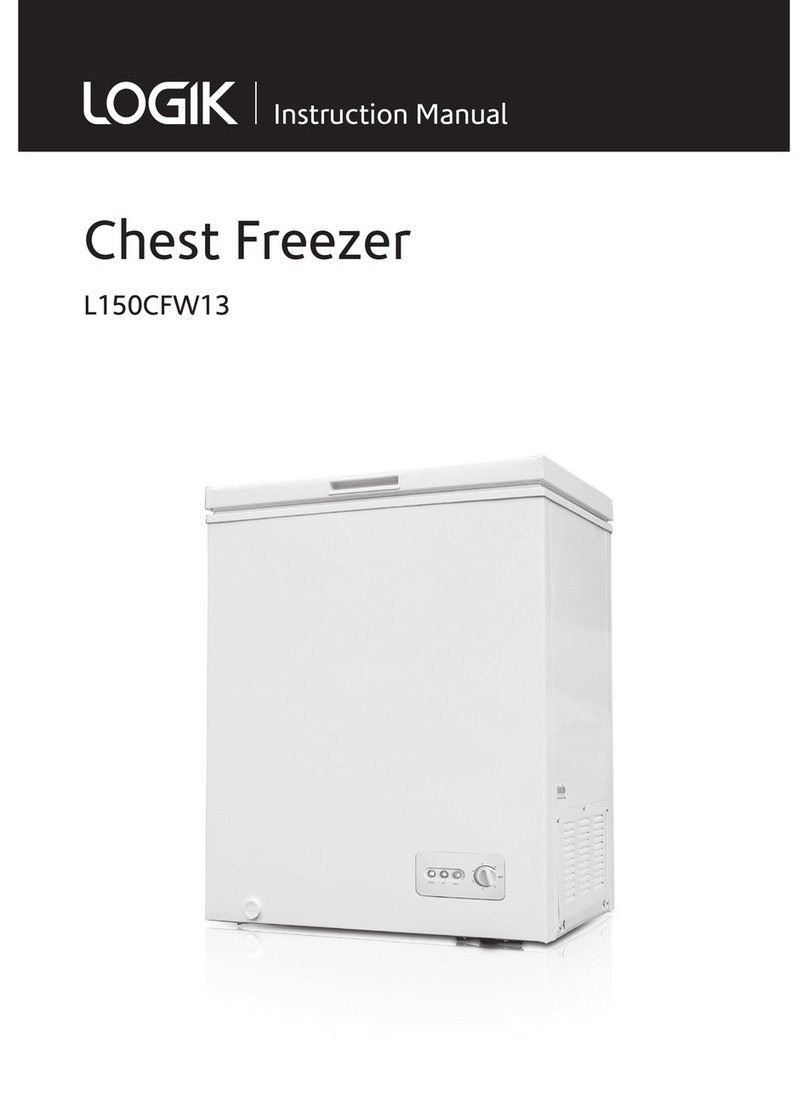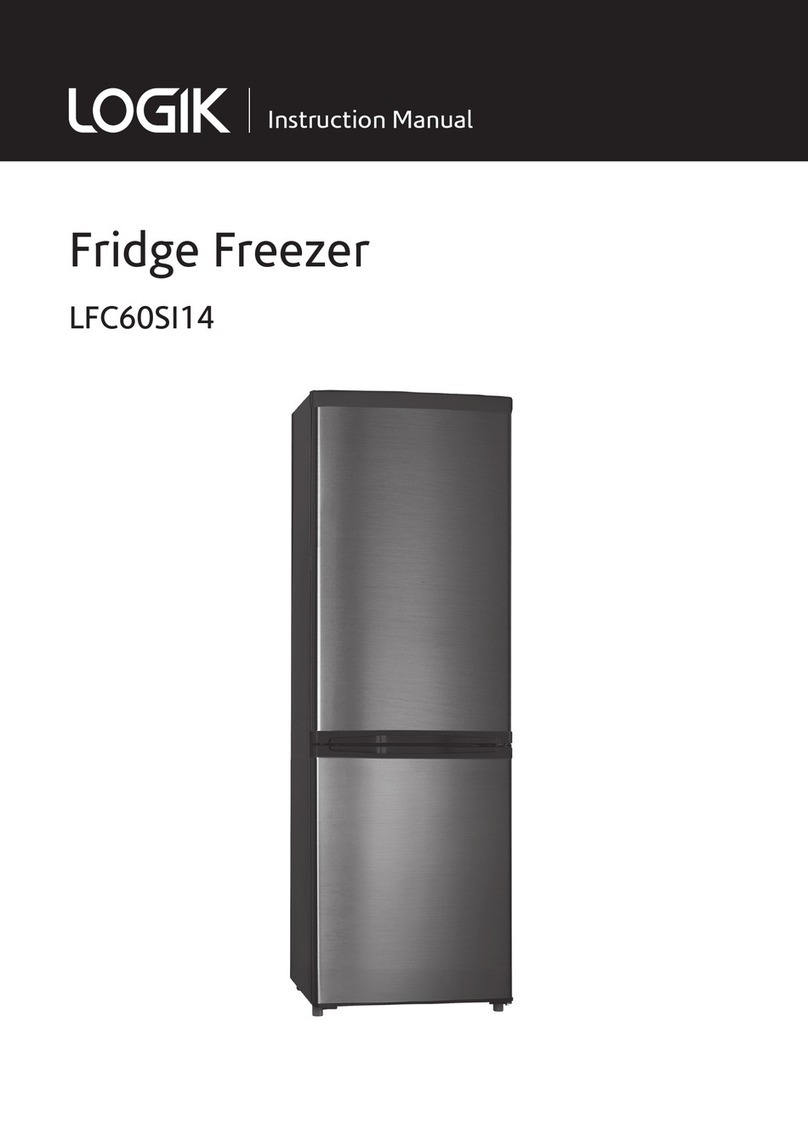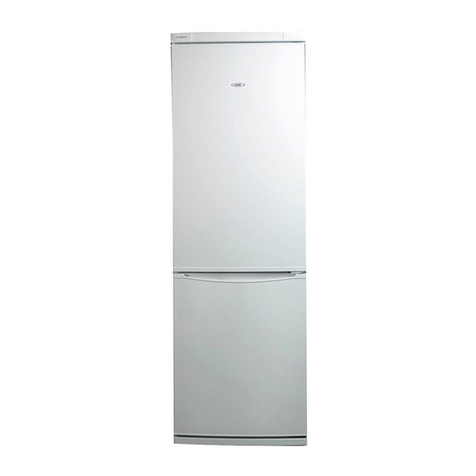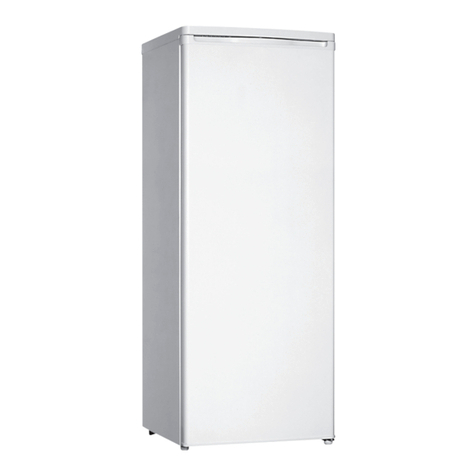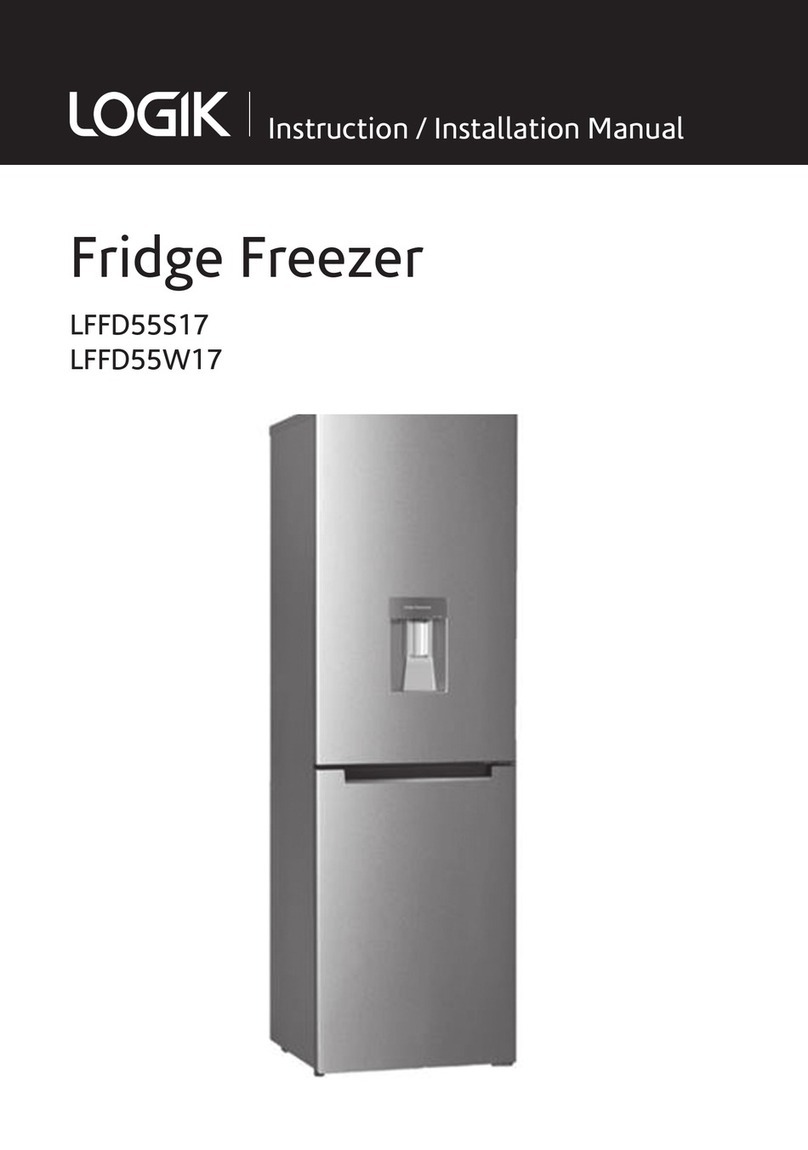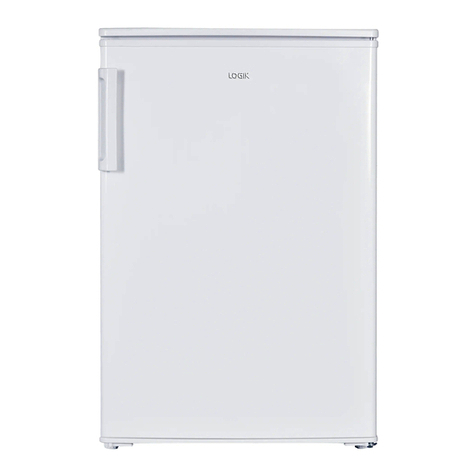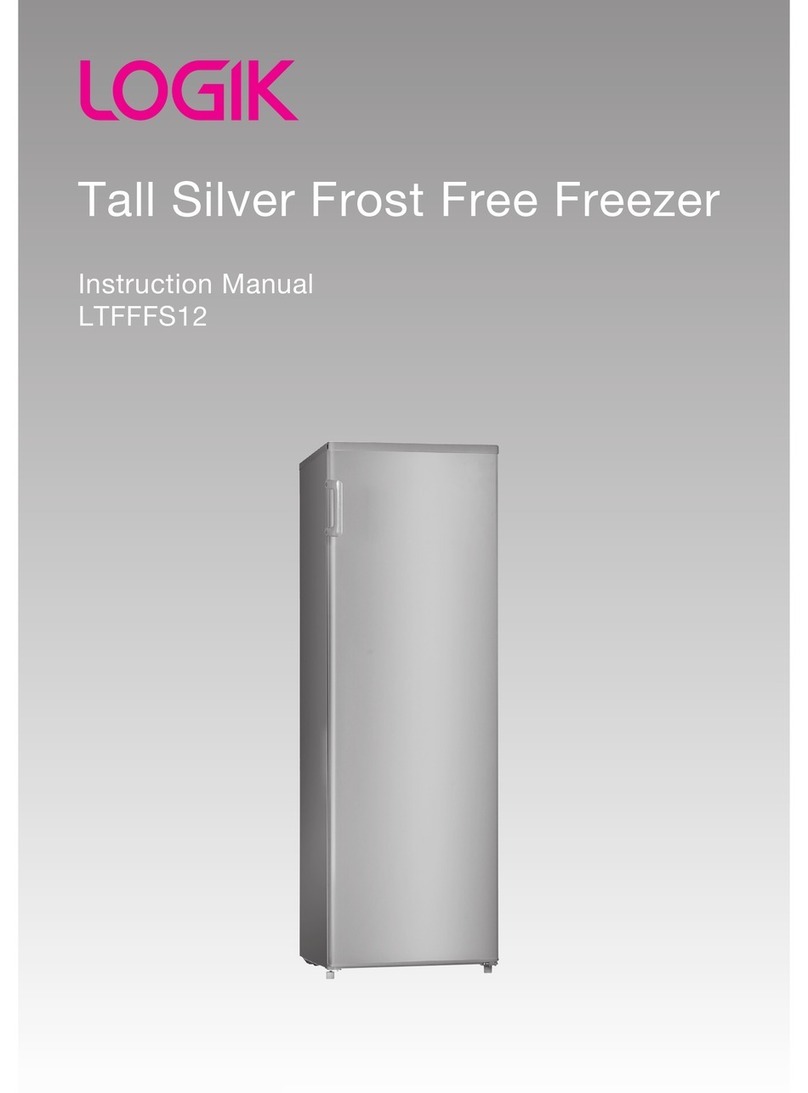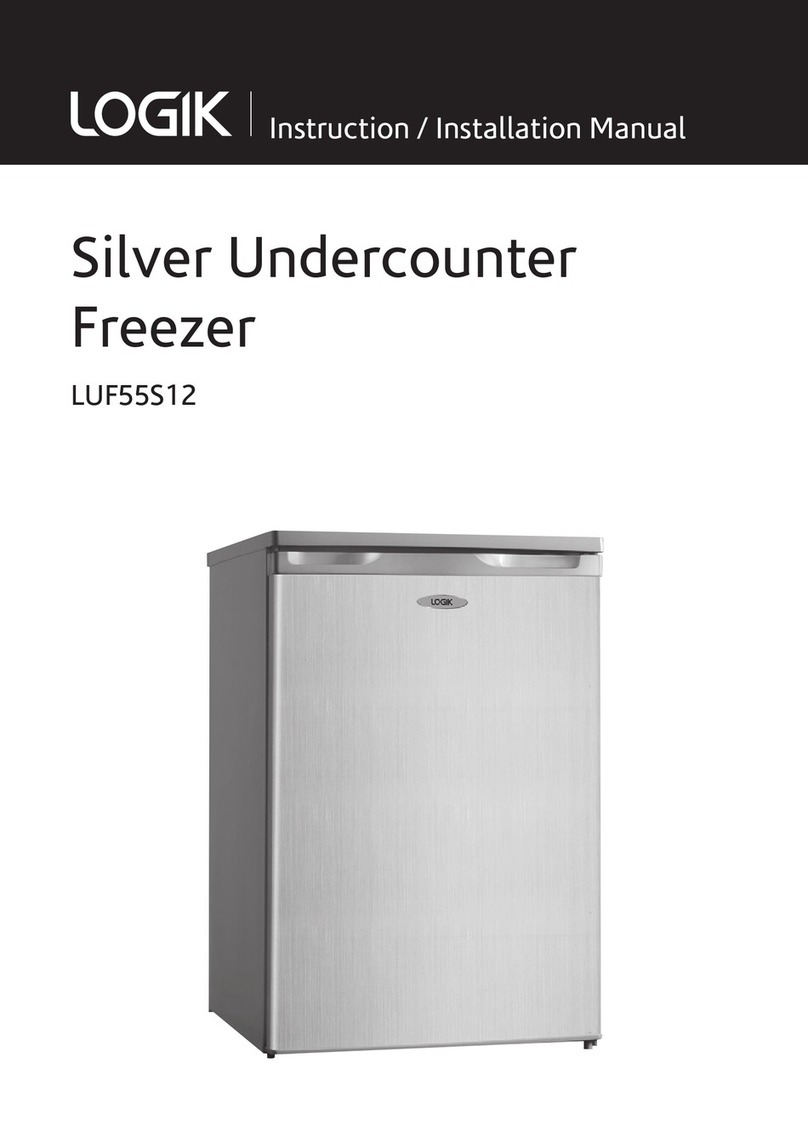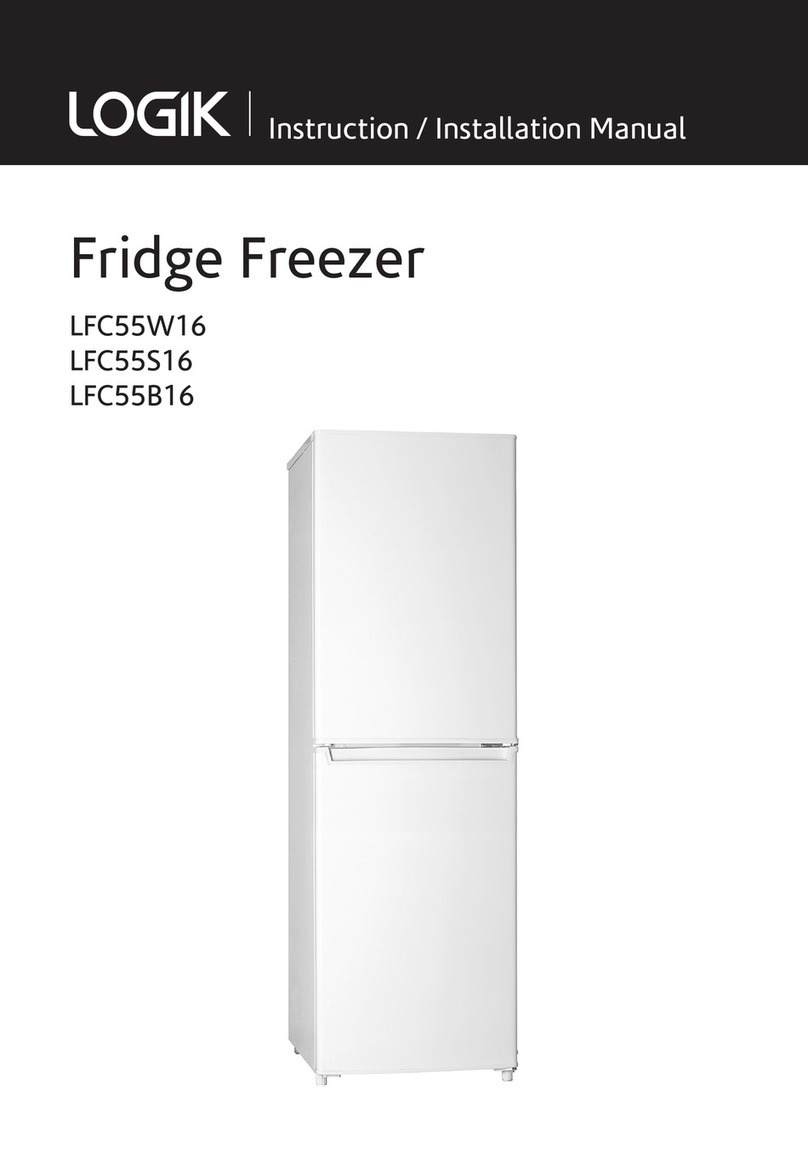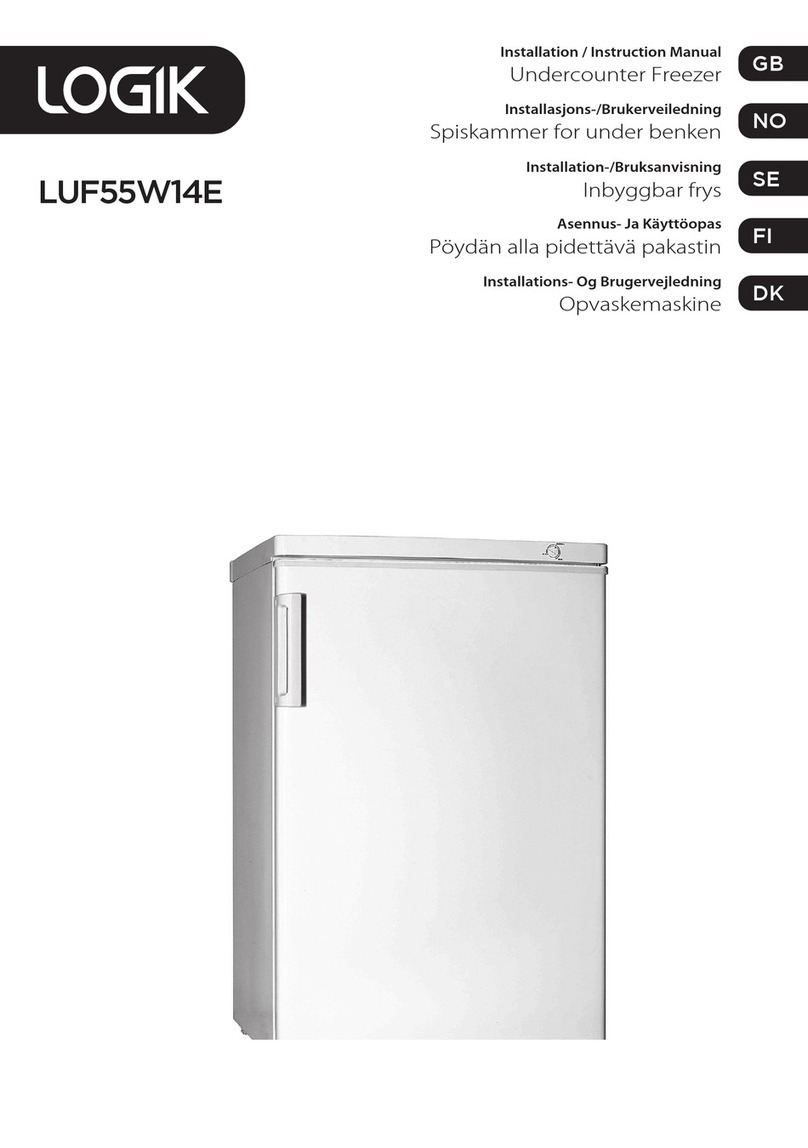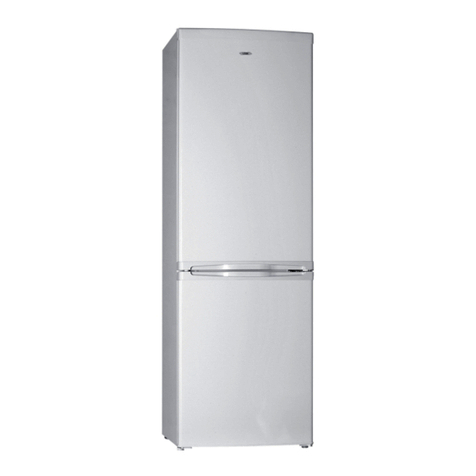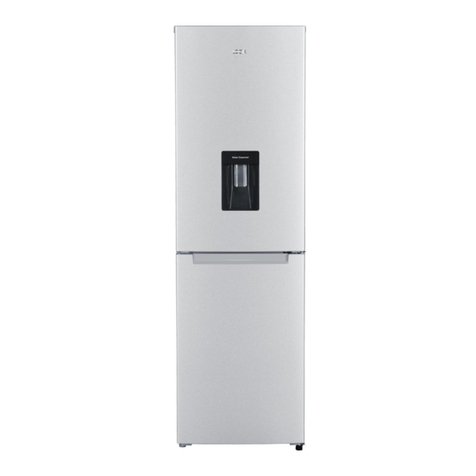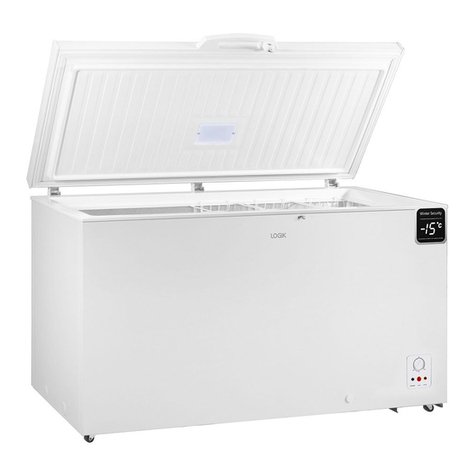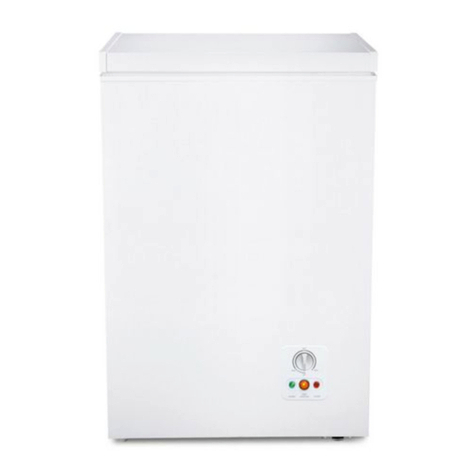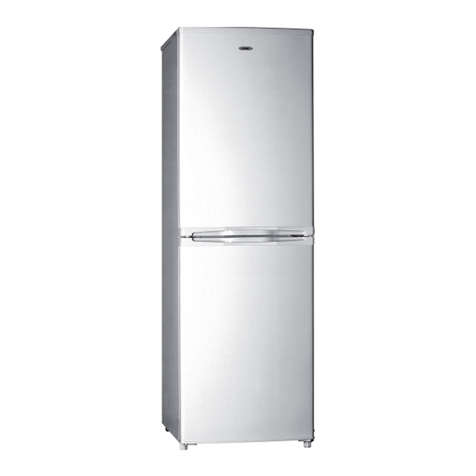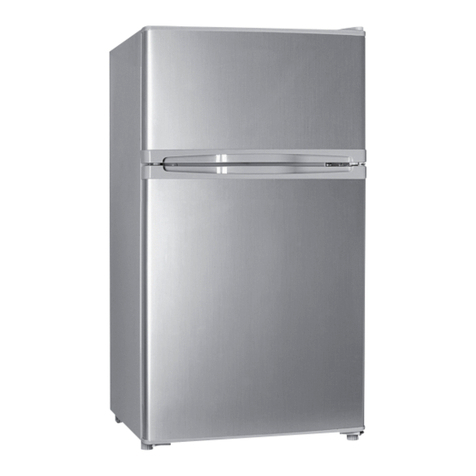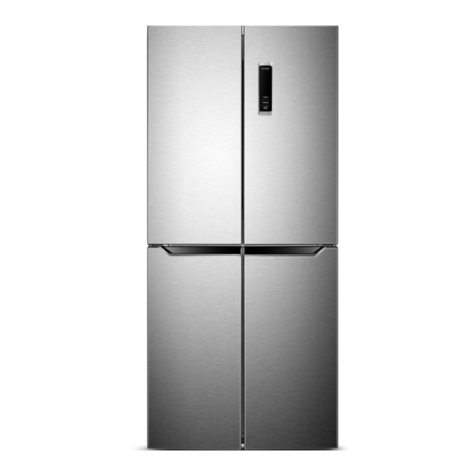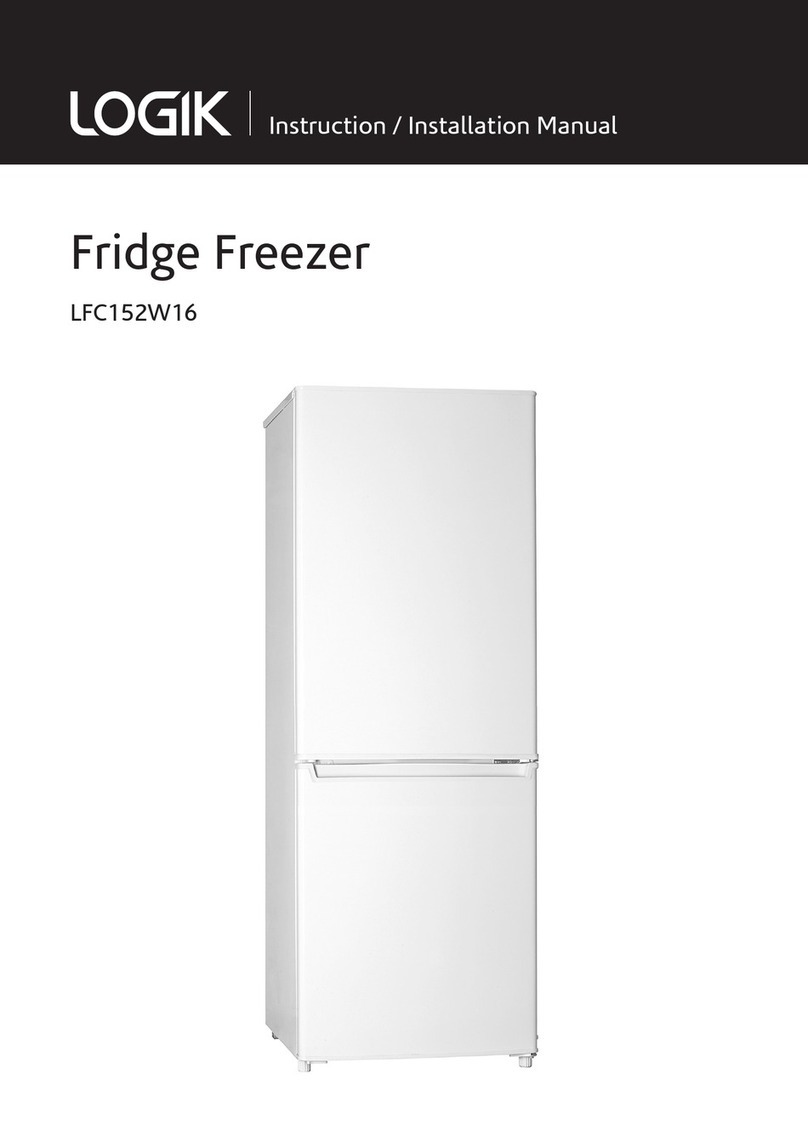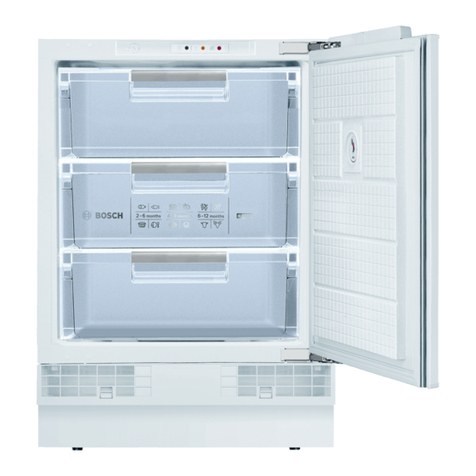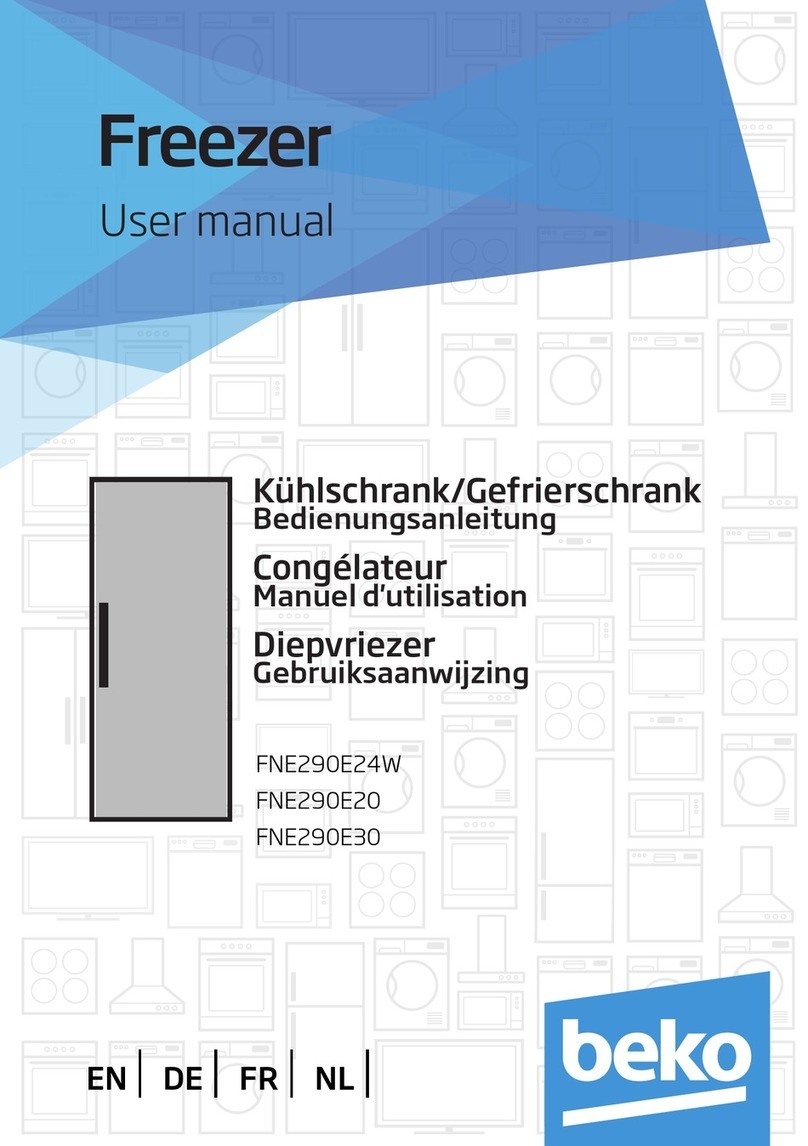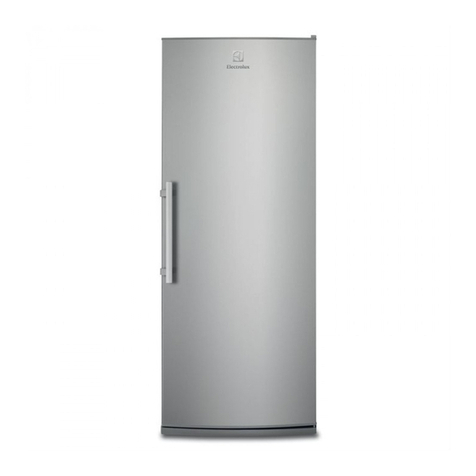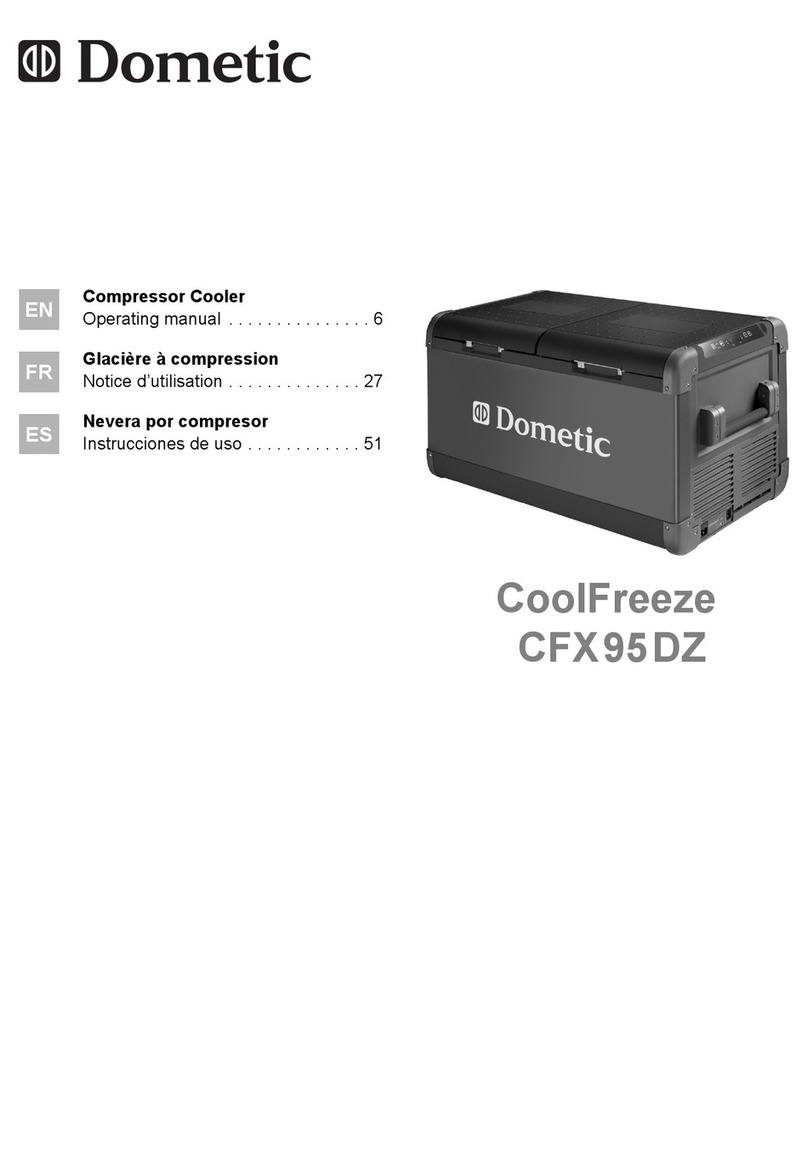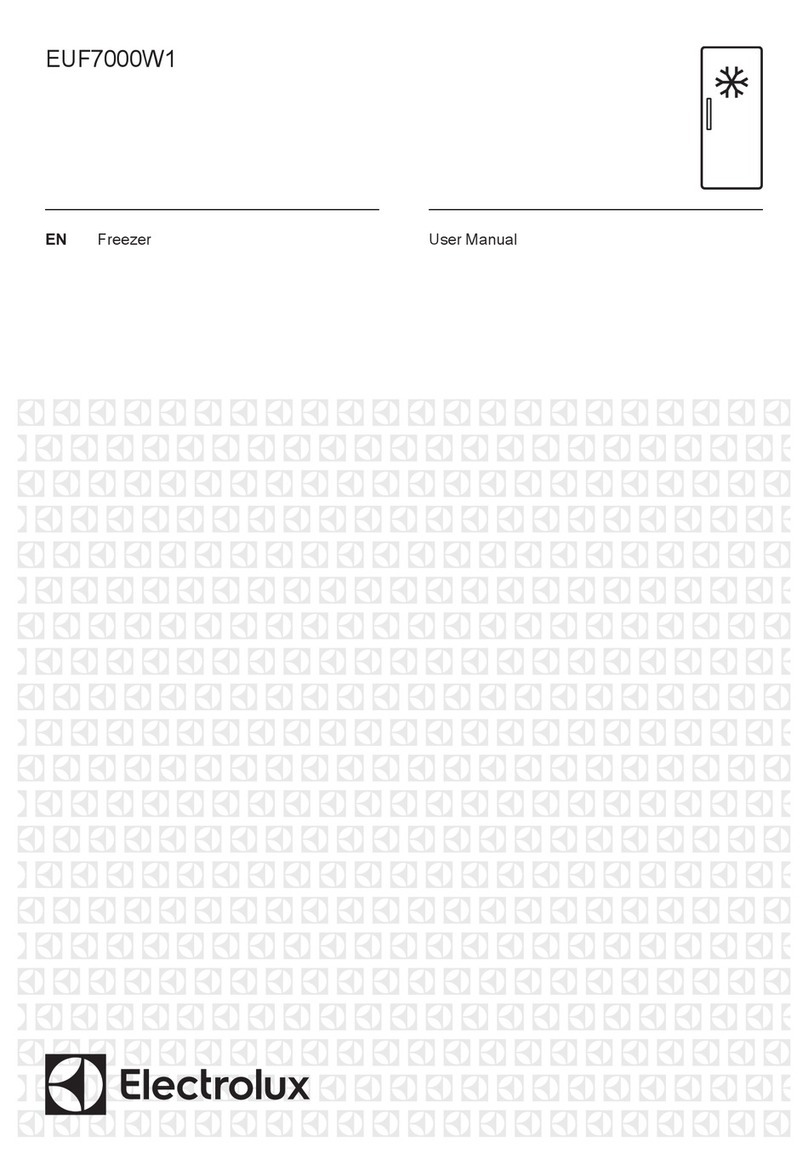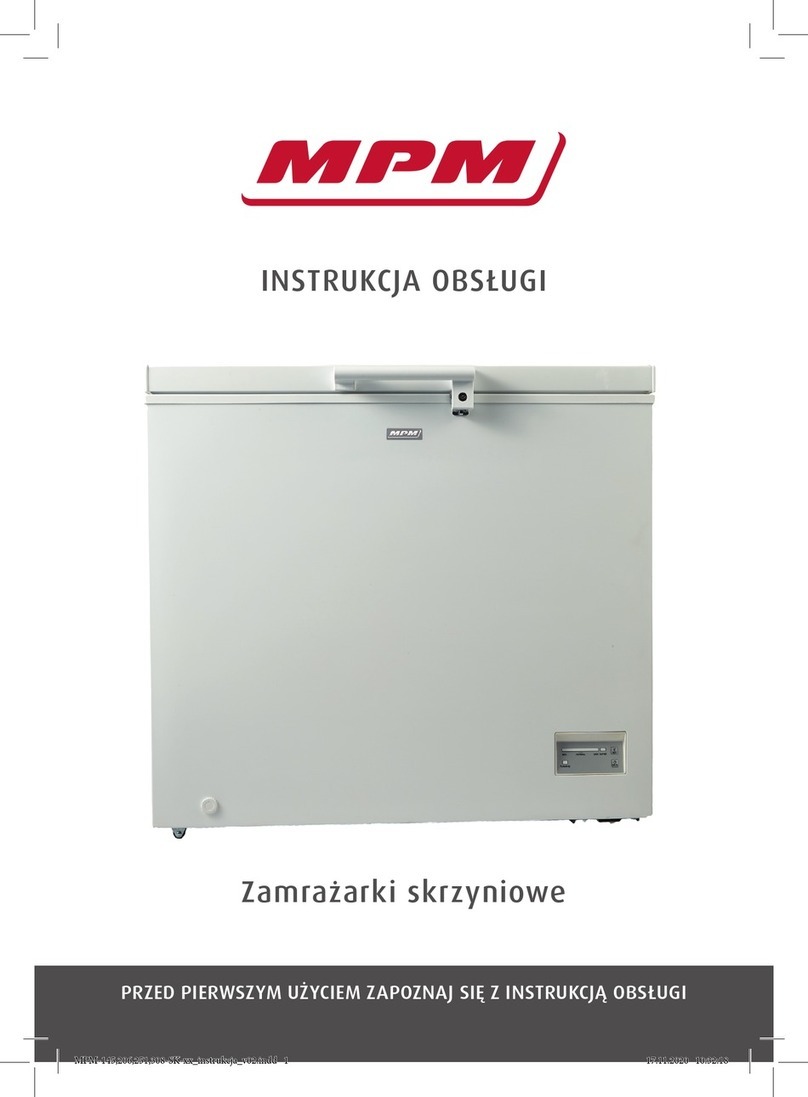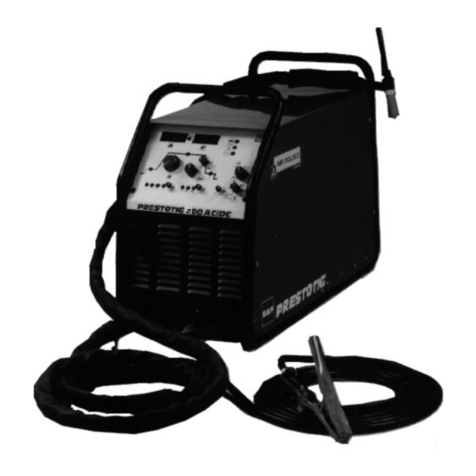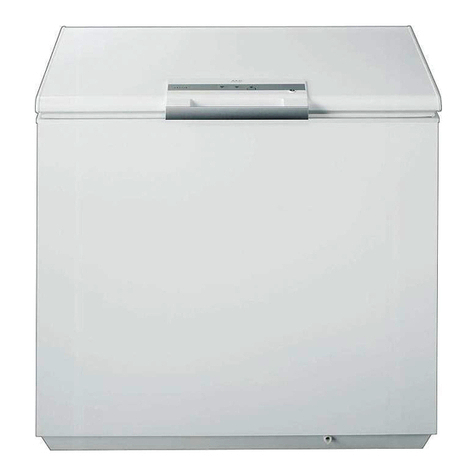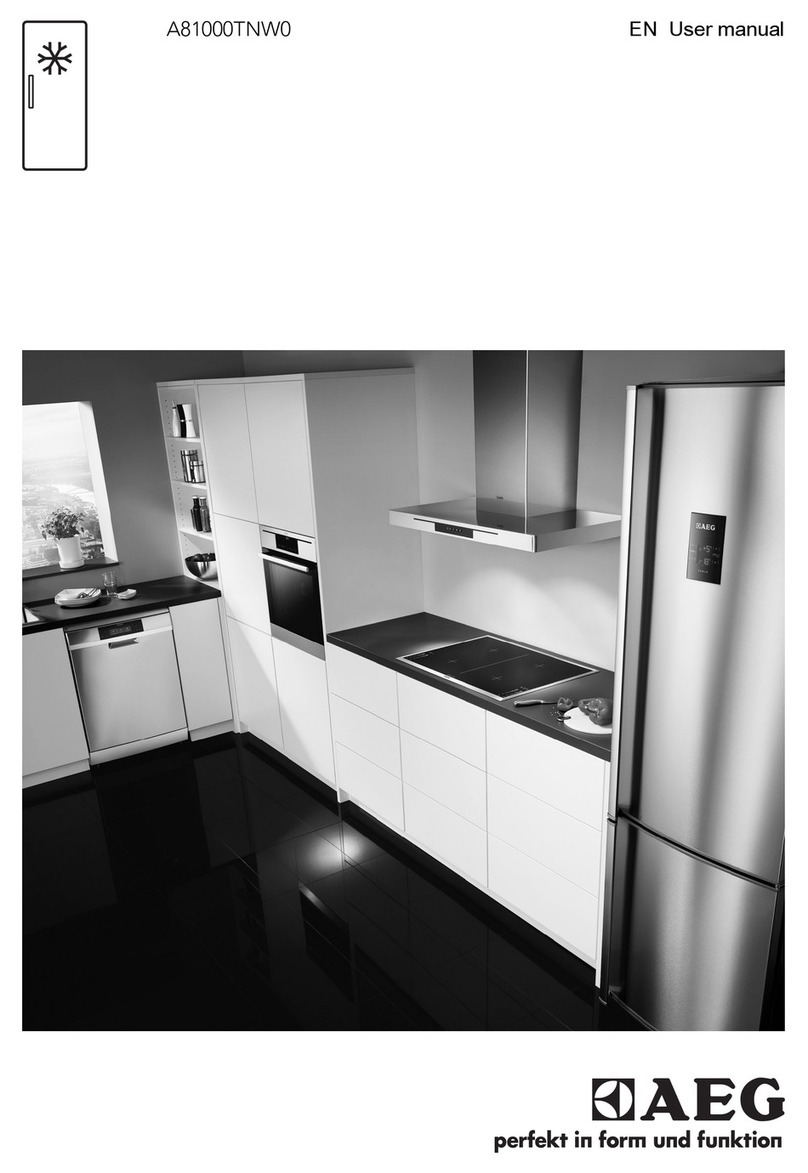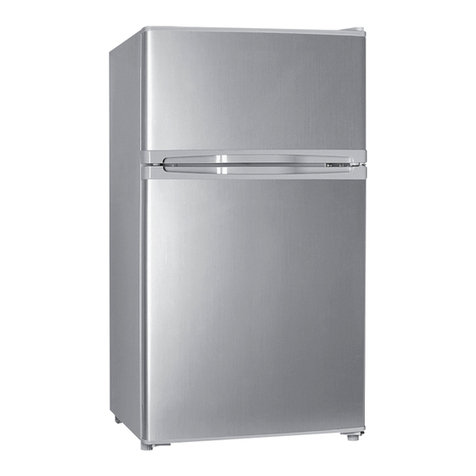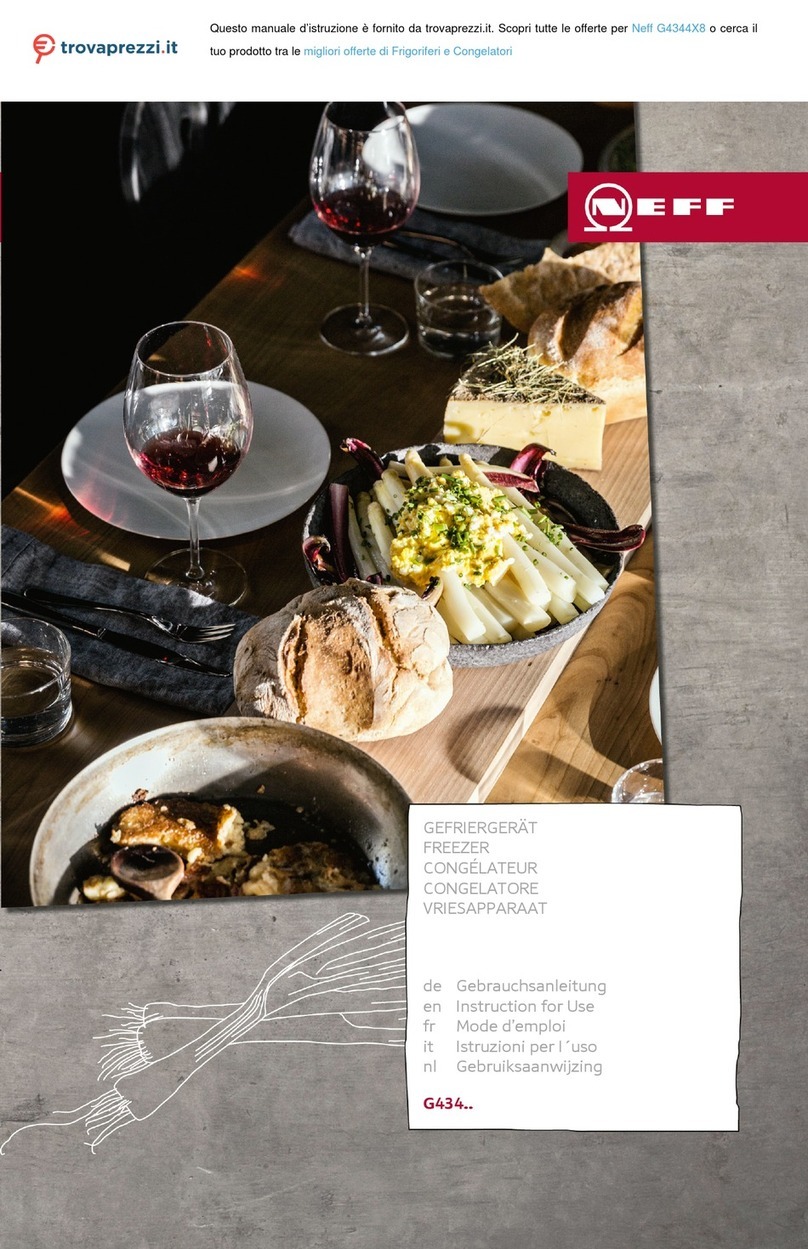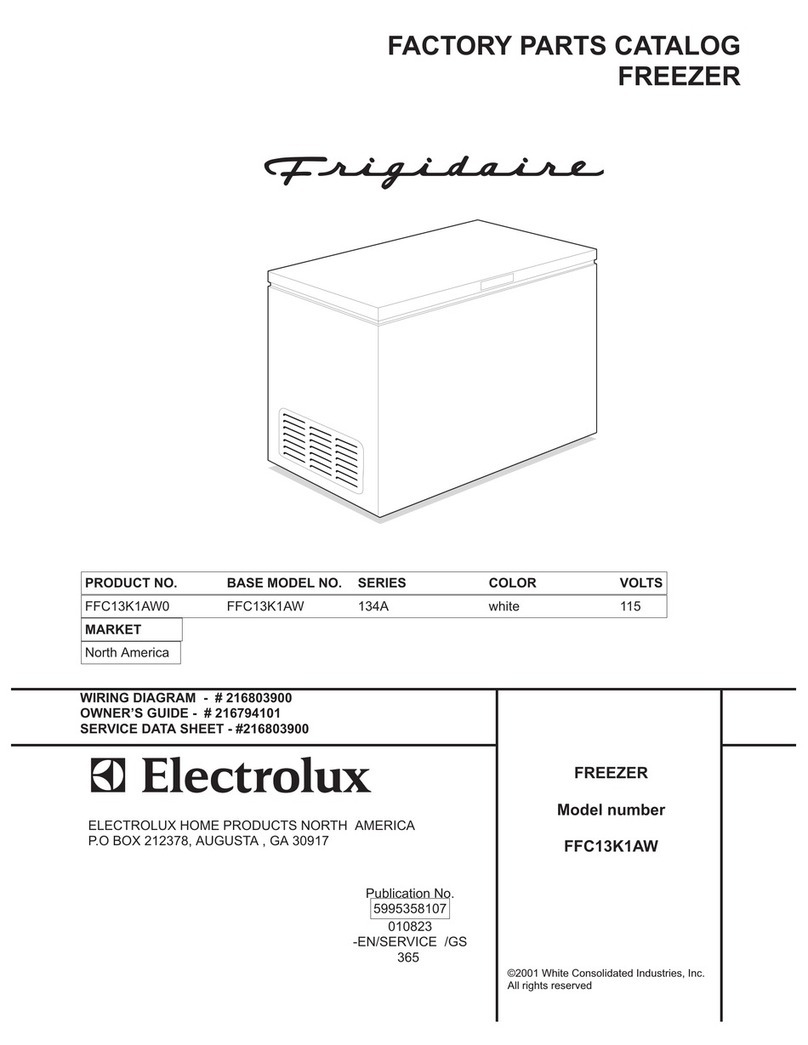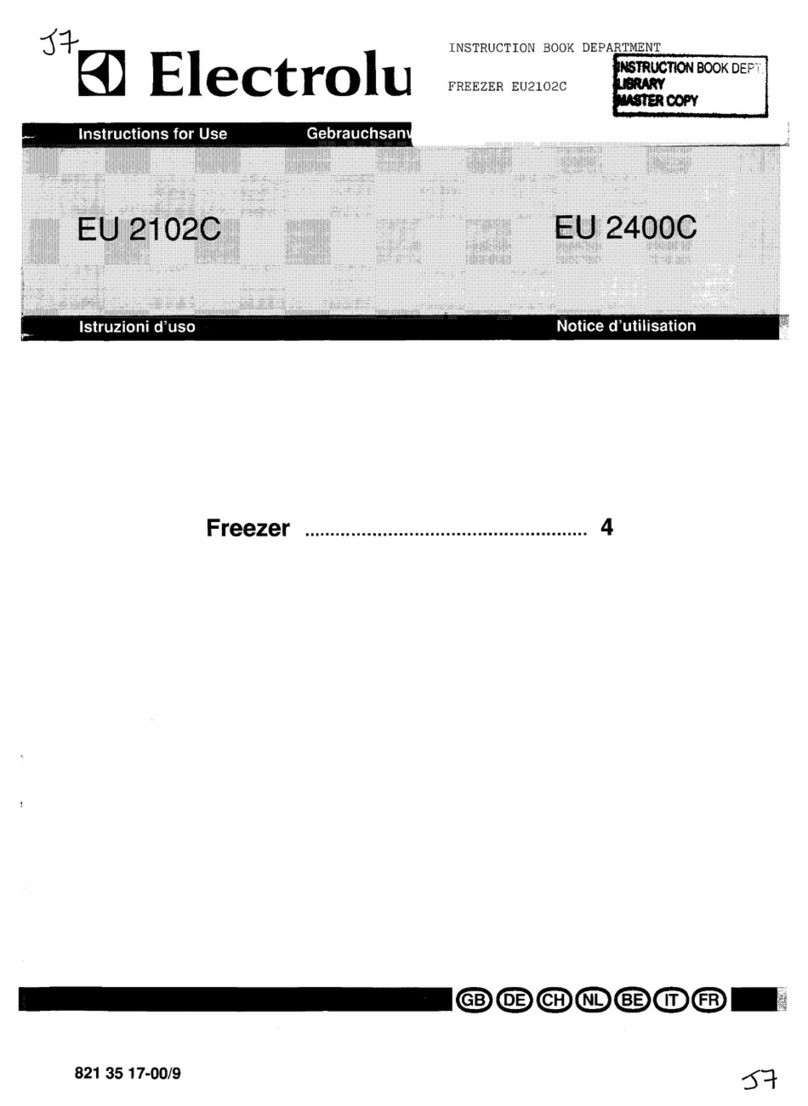
1
SAFETY WARNINGS
REFRIGERATOR
For your continued safety and to reduce the risk of injury or electric shock,
please follow all the safety precautions listed below.
• Read all instructions carefully before using the unit and keep them for
future reference.
• Retain the manual. If you pass the unit onto a third party, make sure to
include this manual.
• This appliance is intended for indoor household use and similar
applications such as:
– farm houses and by clients in hotels, motels and other residential type
environment;
– bed and breakfast type environment;
– sta kitchen areas in shops, oces and other working environment;
– catering and similar non-retail applications.
• Ensure that the plug is easily accessible to enable disconnection from
the mains supply.
• If the mains cable is damaged, it must be replaced by the manufacturer,
its service agent or a qualied technician in order to avoid a hazard.
• Choose a location for your unit away from heat sources such as radiators
or res as refrigerant and vesicant are burnable.
• The unit must be manoeuvred by a minimum of 2 persons.
• This appliance can be used by children aged from 8 years and above
and persons with reduced physical, sensory or mental capabilities or
lack of experience and knowledge if they have been given supervision
or instruction concerning use of the appliance in a safe way and
understand the hazards involved. Children shall not play with the
appliance. Cleaning and user maintenance shall not be made by
children without supervision.
• Children aged from 3 to 8 years are allowed to load and unload
refrigerating appliances.
• Children should be supervised to ensure that they do not play with the
unit.
• If your unit is tted with a lock to prevent children being trapped inside,
keep the key out of reach and not in the vicinity of the unit.
• Do not store explosive substances such as aerosol cans with a
ammable propellant in this appliance.
IB safety_Refrigerator_UK_RC_Final211007.indd 1IB safety_Refrigerator_UK_RC_Final211007.indd 1 7/10/2021 10:29 AM7/10/2021 10:29 AM
